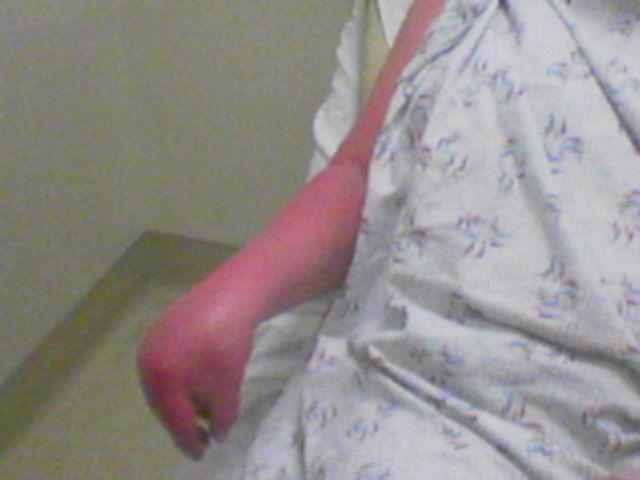|
Neridronate
Neridronic acid (INN; the anion is called neridronate) is a bisphosphonate. In Italy it is used to treat Osteogenesis imperfecta and Paget's disease of bone. A 2013 clinical trial suggests CRPS Type I (Complex regional pain syndrome Complex regional pain syndrome (CRPS) is any of several painful conditions that are characterized by a continuing (spontaneous and/or evoked) regional pain that is seemingly disproportionate in time or degree to the usual course of any known trau ...) responds to treatment with intravenous neridronate. References Bisphosphonates {{musculoskeletal-drug-stub ... [...More Info...] [...Related Items...] OR: [Wikipedia] [Google] [Baidu] |
Bisphosphonate
Bisphosphonates are a class of drugs that prevent the loss of bone density, used to treat osteoporosis and similar diseases. They are the most commonly prescribed drugs used to treat osteoporosis. They are called bisphosphonates because they have two phosphonate () groups. They are thus also called diphosphonates ('' bis-'' or '' di-'' + ''phosphonate''). Evidence shows that they reduce the risk of fracture in post-menopausal women with osteoporosis. Bone tissue undergoes constant remodeling and is kept in balance (homeostasis) by osteoblasts creating bone and osteoclasts destroying bone. Bisphosphonates inhibit the digestion of bone by encouraging osteoclasts to undergo apoptosis, or cell death, thereby slowing bone loss. The uses of bisphosphonates include the prevention and treatment of osteoporosis, Paget's disease of bone, bone metastasis (with or without hypercalcemia), multiple myeloma, primary hyperparathyroidism, osteogenesis imperfecta, fibrous dysplasia, and o ... [...More Info...] [...Related Items...] OR: [Wikipedia] [Google] [Baidu] |
Paget's Disease Of Bone
Paget's disease of bone (commonly known as Paget's disease or, historically, osteitis deformans) is a condition involving cellular remodeling and deformity of one or more bones. The affected bones show signs of dysregulated bone remodeling at the microscopic level, specifically excessive bone breakdown and subsequent disorganized new bone formation. These structural changes cause the bone to weaken, which may result in deformity, pain, bone fractures, fracture or arthritis of associated joints. The exact cause is unknown, although leading theories indicate both genetic and acquired factors (see Paget's disease of bone#Causes, Causes). Paget's disease may affect any one or several bones of the body (most commonly pelvis, tibia, femur, lumbar vertebrae, and skull), but never the entire skeleton, and does not spread from bone to bone. Rarely, a bone affected by Paget's disease can transform into a Osteosarcoma, malignant bone cancer. As the disease often affects people differently, ... [...More Info...] [...Related Items...] OR: [Wikipedia] [Google] [Baidu] |
Anion
An ion () is an atom or molecule with a net electrical charge. The charge of an electron is considered to be negative by convention and this charge is equal and opposite to the charge of a proton, which is considered to be positive by convention. The net charge of an ion is not zero because its total number of electrons is unequal to its total number of protons. A cation is a positively charged ion with fewer electrons than protons while an anion is a negatively charged ion with more electrons than protons. Opposite electric charges are pulled towards one another by electrostatic force, so cations and anions attract each other and readily form ionic compounds. Ions consisting of only a single atom are termed atomic or monatomic ions, while two or more atoms form molecular ions or polyatomic ions. In the case of physical ionization in a fluid (gas or liquid), "ion pairs" are created by spontaneous molecule collisions, where each generated pair consists of a free electron and ... [...More Info...] [...Related Items...] OR: [Wikipedia] [Google] [Baidu] |
Osteogenesis Imperfecta
Osteogenesis imperfecta (; OI), colloquially known as brittle bone disease, is a group of genetic disorders that all result in bones that break easily. The range of symptoms—on the skeleton as well as on the body's other organs—may be mild to severe. Symptoms found in various types of OI include whites of the eye (sclerae) that are blue instead, short stature, loose joints, hearing loss, breathing problems and problems with the teeth (dentinogenesis imperfecta). Potentially life-threatening complications, all of which become more common in more severe OI, include: tearing ( dissection) of the major arteries, such as the aorta; pulmonary valve insufficiency secondary to distortion of the ribcage; and basilar invagination. The underlying mechanism is usually a problem with connective tissue due to a lack of, or poorly formed, type I collagen. In more than 90% of cases, OI occurs due to mutations in the ''COL1A1'' or ''COL1A2'' genes. These mutations may be inherited ... [...More Info...] [...Related Items...] OR: [Wikipedia] [Google] [Baidu] |
Complex Regional Pain Syndrome
Complex regional pain syndrome (CRPS) is any of several painful conditions that are characterized by a continuing (spontaneous and/or evoked) regional pain that is seemingly disproportionate in time or degree to the usual course of any known trauma or other lesion. Usually starting in a limb, it manifests as extreme pain, swelling, limited range of motion, and changes to the skin and bones. It may initially affect one limb and then spread throughout the body; 35% of affected people report symptoms throughout their whole bodies. Two types exist: reflex sympathetic dystrophy (RSD) and causalgia. Having both types is possible. Classification The classification system in use by the International Association for the Study of Pain (IASP) divides CRPS into two types. It is recognised that people may exhibit both types of CRPS. Signs and symptoms Clinical features of CRPS have been found to be neurogenic inflammation, inflammation resulting from the release of certain proinflammat ... [...More Info...] [...Related Items...] OR: [Wikipedia] [Google] [Baidu] |



